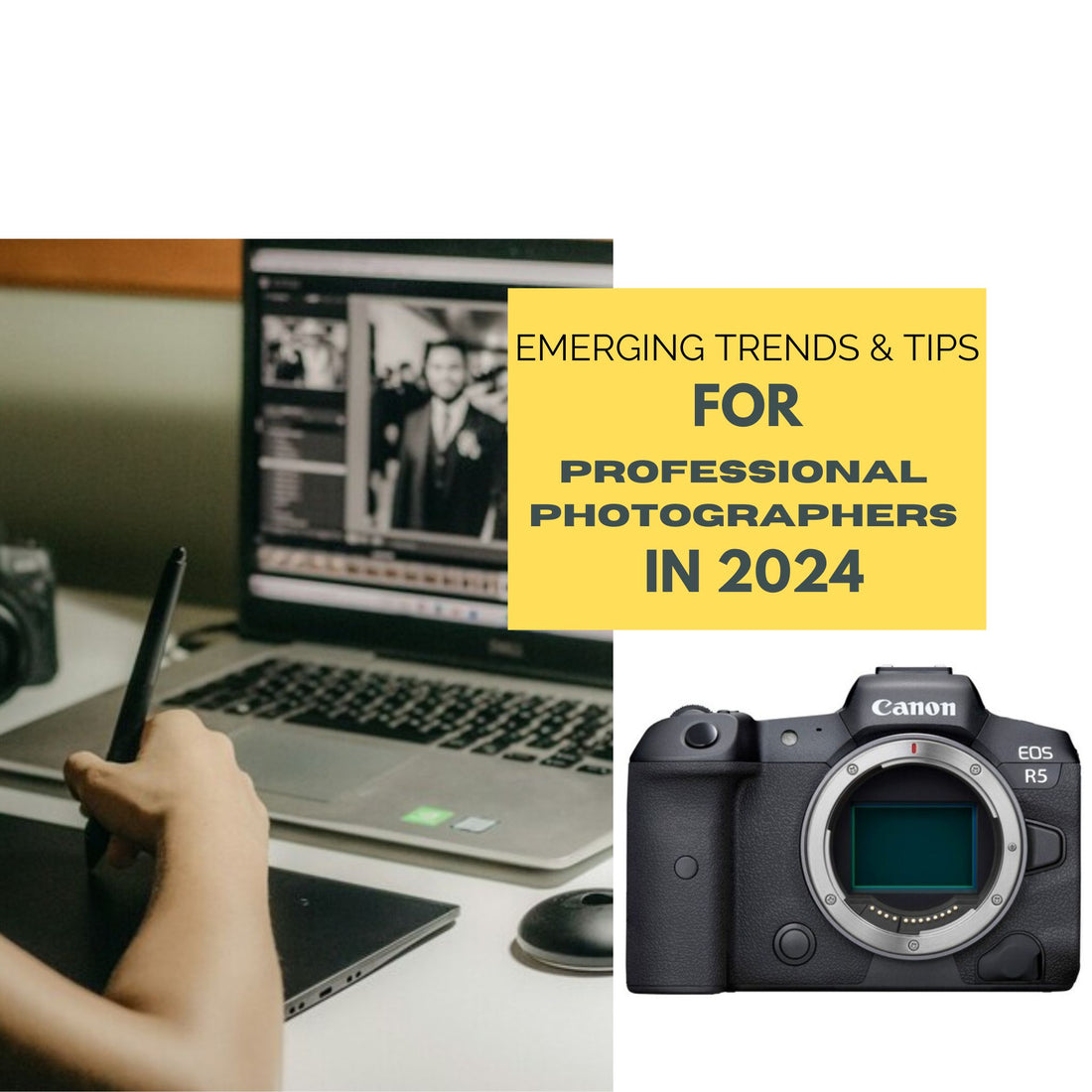
Emerging Trends and Tips for Professional Photographers in 2024
Share
As the photography industry continues to evolve, staying updated on the latest trends and techniques is crucial for professional photographers. From innovative camera gear to advanced post-production methods, this comprehensive guide covers everything you need to know to stay at the top of your game in 2024.
Latest Trends in Photography
-
Mirrorless Cameras Dominance: Mirrorless cameras are continuing to dominate the market due to their compact size, advanced features, and superior image quality. Cameras like the Canon EOS R5 Body and Sony A7 III Body are leading the charge with their exceptional performance and versatility.
-
AI in Photography: Artificial Intelligence is revolutionizing photography, from smart autofocus systems to AI-based editing tools. This technology helps photographers streamline their workflow and achieve better results with less effort.
-
Sustainable Photography: Eco-friendly practices are becoming increasingly important. Photographers are now focusing on sustainable methods, such as using rechargeable batteries and environmentally-friendly materials.
-
High-Resolution Sensors: Cameras with high-resolution sensors like the Canon EOS R5 Body are becoming more popular, providing unparalleled detail and flexibility for cropping and large prints.

Business Tips for Photographers
-
Effective Marketing Strategies: Utilize social media platforms, SEO, and email marketing to reach a broader audience. Creating engaging content and interacting with followers can significantly boost your online presence.
-
Client Relationship Management: Building strong relationships with clients is key to a successful photography business. Offer exceptional customer service, communicate effectively, and follow up with clients to maintain a positive rapport.
-
Diversifying Income Streams: Consider offering workshops, selling prints, and exploring stock photography to diversify your income. This not only provides financial stability but also enhances your brand's reach.
Essential Photography Equipment
-
Cameras and Lenses:
- Canon EOS R5 Body: Known for its impressive 45MP sensor and 8K video recording.
- Sony A7 III Body: A versatile option with excellent low-light performance.
- Canon RF 70-200mm f/2.8L IS USM: Ideal for sports and wildlife photography.
- Nikon Z 24-120mm f/4.0 S: A versatile lens perfect for various shooting scenarios.
-
Lighting Equipment: Invest in high-quality lighting equipment like softboxes, reflectors, and speedlights to enhance your studio and outdoor shoots.
-
Editing Software: Adobe Lightroom and Photoshop remain industry standards for photo editing. Exploring alternative software like Capture One and Luminar AI can also provide unique tools and features.

Advanced Editing and Post-Production Techniques
-
Non-Destructive Editing: Utilizing non-destructive editing techniques allows you to make adjustments without permanently altering the original image. This includes using adjustment layers and masks in Photoshop.
-
Frequency Separation: A popular technique for retouching skin, frequency separation helps achieve a smooth yet realistic look by separating the image's texture from color data.
-
Color Grading: Enhance the mood and tone of your images through advanced color grading techniques. Tools like the Color Balance and Curves adjustments in Photoshop can help achieve cinematic effects.

Lighting Techniques for Stunning Images
-
Natural Light: Understanding and utilizing natural light is fundamental. Golden hour and blue hour provide soft, flattering light that is perfect for portraits and landscapes.
-
Artificial Lighting: Mastering artificial lighting can dramatically improve your images. Experiment with different lighting setups, such as Rembrandt lighting and split lighting, to add depth and dimension to your portraits.
-
Light Modifiers: Use diffusers, reflectors, and grids to control and shape light. These tools can help soften harsh light, reduce shadows, and create more flattering portraits.

Mastering Composition
-
Rule of Thirds: A classic composition rule that helps create balanced and interesting images. Position your subject along the grid lines or at the intersections to draw the viewer’s eye.
-
Leading Lines: Use natural or man-made lines to guide the viewer’s eye towards the main subject. This technique adds depth and interest to your photos.
-
Symmetry and Patterns: Symmetry and patterns can create visually appealing images. Look for repetitive elements and symmetrical scenes to add harmony and structure to your compositions.
Staying updated on the latest trends, mastering advanced techniques, and investing in the right equipment are essential for thriving in the professional photography industry. Whether you're looking to enhance your skills, grow your business, or explore new creative avenues, this guide provides valuable insights and practical tips to help you succeed in 2024.
